How the Sixers’ Bubble Burst—and What This Year’s Team Can Learn From It
Excerpt from the new book Bubbleball: Inside the NBA’s Fight to Save A Season by Ben Golliver published by Abrams Press. Copyright © 2021 by Ben Golliver. Used by permission of Abrams Press, an imprint of Harry N. Abrams, Inc., New York. All rights reserved.
Other than the Bucks, Lakers and Clippers, the two teams I was most curious to watch in the playoffs were the Philadelphia 76ers and Houston Rockets. Both had All-Star talent and past postseason experience. Both had coaches on the hot seat and questions about their chemistry. Most importantly, both played unorthodox styles that could potentially reveal how bubble basketball was different from normal basketball. The answers on the Sixers came almost immediately, thanks to a riveting collapse.
Philadelphia had an impressive roster on paper, and its collection of name players had convinced me before the season that a conference finals trip was possible. Joel Embiid was a bona fide franchise center with a massive frame that made him a force on both ends. Ben Simmons was a former No. 1 pick—a 6' 10" point guard with impeccable vision and the ability to defend multiple positions. Tobias Harris was a floor-spacing forward who averaged nearly 20 points per game but didn’t need to dominate the ball. Al Horford was the prized free agent acquisition, a heady big man plucked off the rival Boston Celtics. Josh Richardson was a quality two-way wing who could fit in as a fifth option and complete a well-rounded defense.
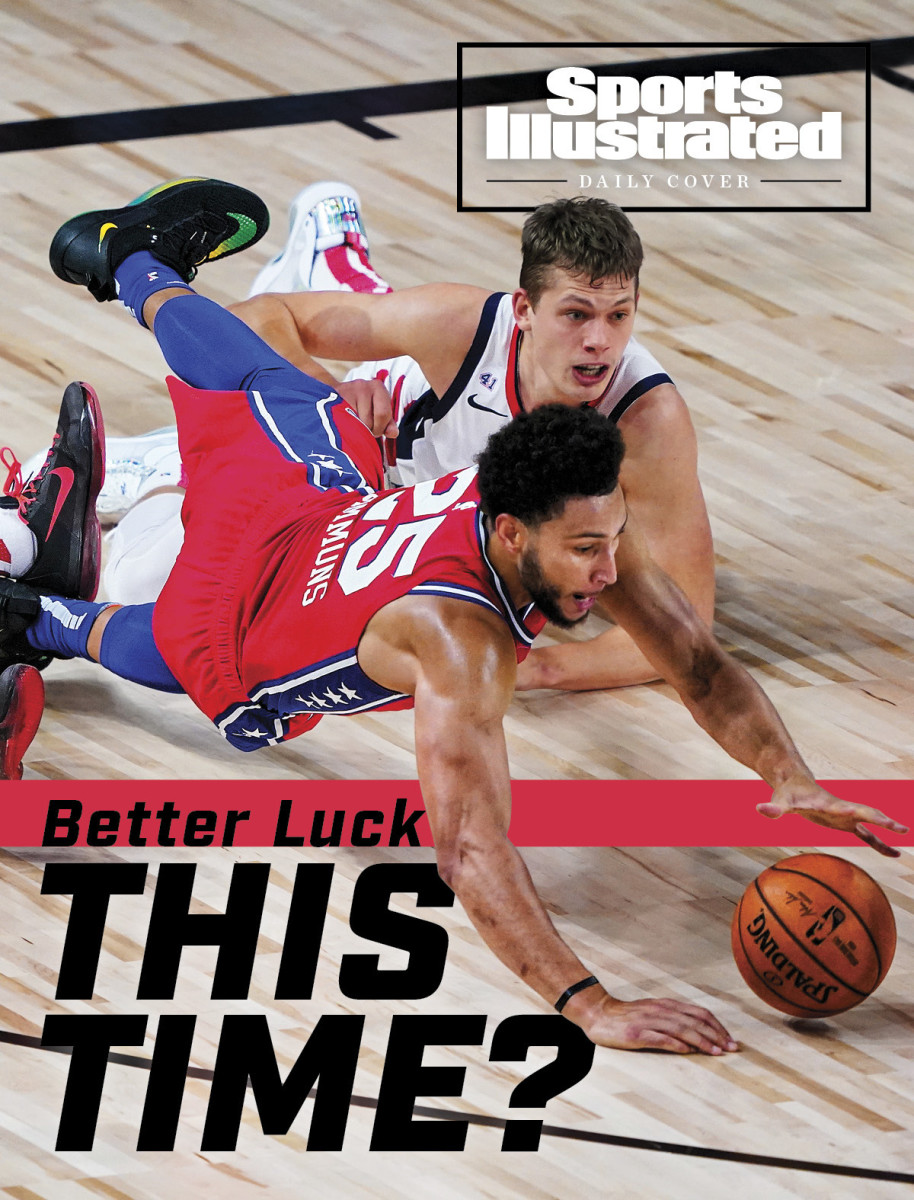
While the rest of the league was prioritizing shooting, Philadelphia built itself around Simmons, a total non-shooter, and Embiid, a willing but inconsistent one. While modern trends focused on downsized lineups and interchangeable wings, Philadelphia loaded up on size and worried less about versatility. While other top contenders ran their offenses outside-in through perimeter playmakers, Philadelphia’s attack shaded more toward an inside-out approach with Embiid.
The Sixers were zagging where others zigged, and it hadn’t worked all that well. They entered the playoffs with a 43–30 record and the No. 6 seed, matched up with the Celtics, who had claimed the third seed with a 48–24 record. Philadelphia had its moments during the regular season, including an impressive Christmas Day win over the Bucks in which Embiid had convincingly outplayed Giannis Antetokounmpo. For the most part, though, they underperformed with an average offense and a seventh-ranked defense that never fully lived up to expectations. Embiid and Horford weren’t clicking, and Simmons’s shooting woes led to constant spacing problems.
After hearing hot seat talk for years, coach Brett Brown was now facing a do-or-die postseason. The affable Maine native had been hired in 2013 to oversee a deep rebuilding effort known as “The Process,” and his boundless optimism became the franchise’s defining characteristic as it won fewer than 20 games in his first three seasons. But Brown’s patience paid off when then the Sixers drafted Embiid and Simmons, beginning their gradual transformation into a perennial winner. In his seventh season, Brown now needed to prove that he was still connecting with his players and that he had the right skill set to oversee a deep playoff run. Turning around a losing program was a different task than lifting a good team to greatness.
The Sixers were a perfect bubble bellwether. They had played well at home and horribly on the road during the regular season, but now every game would take place at a neutral site. Would that help their raw talent shine through? Alternatively, would their lineup and fit questions be even more obvious in an empty gym? Would a team with several potential breaking points and chemistry concerns be able to keep it together while isolated from the outside world?
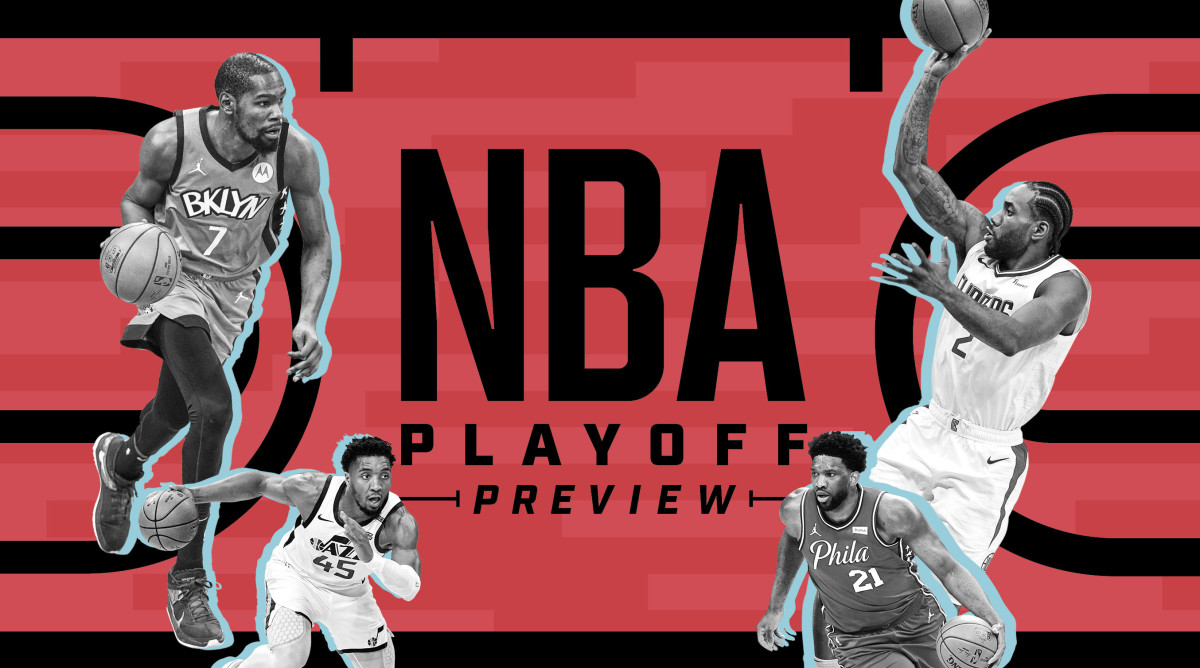
When making predictions, I tried to evaluate players and teams by setting aside their best days and their worst days in search of their baselines. That approach left me skeptical of the Sixers. I just wasn’t convinced they could flip a switch and raise their game no matter how many times Brown insisted that his big and physical team was “built for the playoffs.” I also worried about injury issues, given that Embiid and Simmons were often in and out of the lineup.
My suspicions deepened when Brown decided to shift Simmons out of the point guard role in favor of the unheralded Shake Milton once the Sixers arrived at the bubble. This was a clear demotion for Simmons and a sign that Philadelphia didn’t trust its own philosophical approach. Only a desperate coach would attempt such a radical move right before the playoffs.
The role shift became a footnote when Simmons suffered a knee injury midway through the third quarter of an Aug. 5 win over the Wizards. There was no major contact or collision. Simmons simply grabbed at the top of his knee after landing hard on his left leg while rebounding. Within days, he left the bubble to undergo surgery to address a dislocated kneecap. He didn’t return, ending his bubble stay after just three games.
For a player who missed his entire rookie year due to a foot injury and spent the hiatus rehabilitating from a back injury, this was another tough and untimely break. The Sixers were left shaken and in disbelief. “He really has worked physically to come back stronger,” a disappointed Brown said of Simmons. “I feel bad for him that this situation has happened after all the hard work he put in. You’re just numb to it. You coach who you have. I do genuinely believe that this can galvanize our group and bring us, in an inverted way, together.”
Brown’s spin was unconvincing. By the time the playoffs started, there were teams that had adjusted to their new environments and teams that hadn’t. Philadelphia was in the latter category, dropping three of its first four games after losing Simmons.
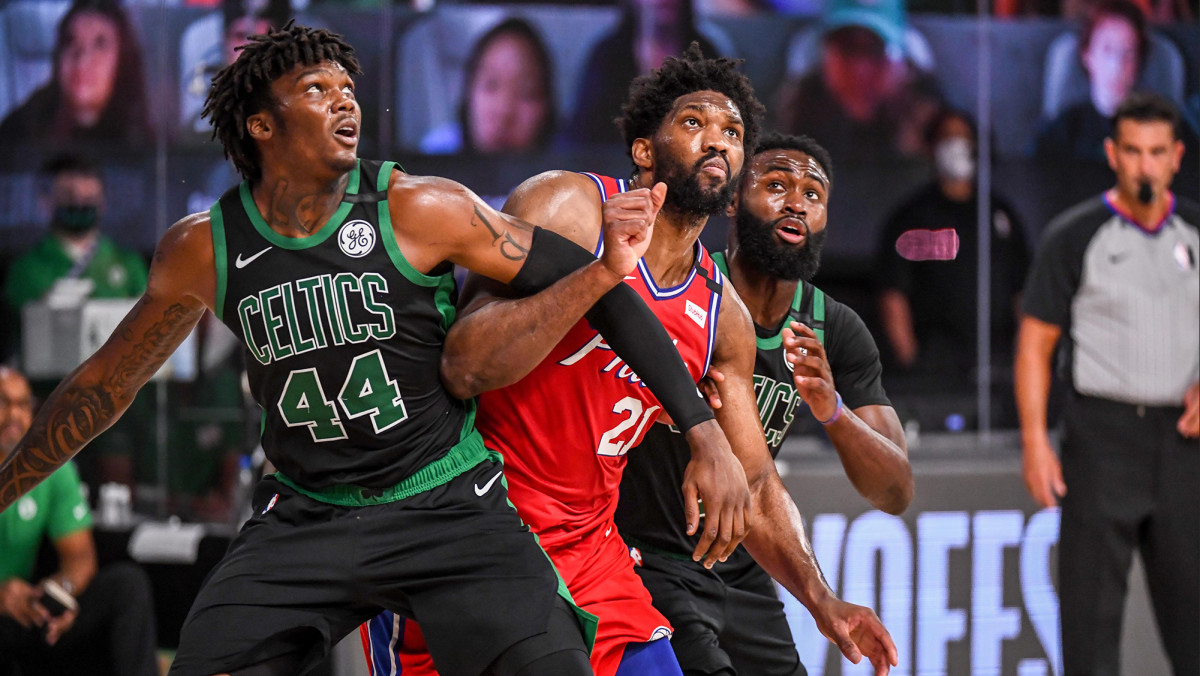
Unfortunately for the Sixers, the Celtics had settled into bubble life nicely. Anyone could have predicted the winner of Game 1 of their first-round series simply by watching the two teams warm up. Boston jumped around, laughing and loose. Philadelphia sleepwalked, flat and tight. The Celtics looked like they genuinely enjoyed one another’s company and were focused with playoff intensity. The Sixers looked like preteens forced by their parents to participate in a school play.
Embiid, the biggest and most respected player in the series, seemed like he was carrying the weight of the world on his shoulders. Brown was on edge, quick to leap from his seat to shout instructions or to berate a referee, while Boston coach Brad Stevens watched placidly.
All of Philadelphia’s strategic bets backfired one by one in Game 1. Using big lineups left the Sixers struggling to keep up with the Celtics’ perimeter trio of Kemba Walker, Jayson Tatum and Jaylen Brown. Playing Embiid and Horford together led to poor spacing on offense and constant mismatches on defense, and the Sixers were outscored by 18 points in Horford’s 31 minutes. Playing through Embiid on offense worked at times, but he struggled with turnovers and grew fatigued down the stretch. Boston’s more flexible and potent lineups outlasted Philadelphia thanks to a strong fourth-quarter push. “I’ve got to do more,” said Embiid, who finished with 26 points and 16 rebounds. “I’ve got one job to do: carry us.”
This was the right leadership sentiment, but Philadelphia’s issues were bigger than one man could fix. Boston had won Game 1 going away despite shooting the ball poorly and losing forward Gordon Hayward to a bad ankle injury. What’s more, the Celtics’ undersized front line, led by Daniel Theis, and active team defense had held up well against Embiid.
Game 2 saw Brett Brown replace Horford with rookie Matisse Thybulle in the starting lineup. This was a logical move: Thybulle was a disruptive and intelligent defensive wing who matched up better with Boston’s stars. But like the Simmons shift, it also revealed Brown’s lack of trust in his central players. Horford, who was signed away from Boston to help defeat his former team, was now relegated to a reserve role in a must-win game.
Boston got hot in Game 2, and Philadelphia never stood a chance in a 128–101 drubbing. Tatum hit eight three-pointers to score 33 points. The Thybulle maneuver was of little help, as Philadelphia was outscored by a whopping 30 points in his 24 minutes. Embiid plugged away for 34 points and 10 rebounds, but he knew he was Sisyphus in sneakers with the game decided shortly after halftime. Harris was a nonfactor, Horford didn’t offer much in his new role, and the Sixers’ bench was badly outplayed.
“It got deflating when their shot-makers went bananas,” Brett Brown said, careful to credit Boston rather than criticize his wavering team’s effort. “If the planet were normal, we would be going back to Philadelphia. The message is some level of belief.”

Embiid also yearned for the comforts of home. “We’re in a bubble,” he said. “Obviously, it would be a different story if we were actually going back to Philly because we never seem to lose in front of our fans.”
It was only natural for their minds to be on the Wells Fargo Center. The Sixers went 29–2 at home before the hiatus, the best mark in the league. They were 4–2 at home during the 2019 playoffs, with all four wins coming by double digits. Without Simmons, with Tatum going nuts and with younger players asked to step up into new roles, they needed the boost that comes from a home crowd in the playoffs. They were openly admitting they needed it too.
The Sixers were drowning, and their minds were on lifeboats that were never going to come. Embiid, who was becoming more demoralized with each loss, lamented Philadelphia’s defensive approach on Tatum. “Jayson has been killing it,” Embiid said. “You have to find a way to get the ball out of his hands. I know they want me to stay back on all pick-and-rolls to protect the basket. We’ve got to make adjustments. Something’s got to change. It feels too easy. He’s walking into those shots.”
After Game 1, Embiid had accepted responsibility. After Game 2, he was laying blame at his coach’s feet. Teams implode every year during the playoffs, but the bubble offered a zoomed-in look at Philadelphia’s struggles. During a normal year, Embiid and Brett Brown would have sat on raised podiums with 10 or 15 feet of separation from the media. Here, they gave interviews in cramped hallways and in rooms that were the size of a small home office. As Embiid shuffled around in sandals, I felt his exhaustion and waning hope. When Brown, with his shirt collar unbuttoned, leaned back in his chair to dispute pointed questions about his future, a sense of dread was palpable.
Game 3 was Philadelphia’s last hope to salvage some pride and make this a series. With Philadelphia clinging to a 94–92 lead, Embiid drew a double-team on the left block and eyed an open Harris in the right corner. Instead of passing to Horford, who was open cutting hard to the hoop, Embiid tossed a flat cross-court pass that Marcus Smart managed to intercept. The turnover reversed the game’s momentum and launched the Celtics on a 10–0 closing run to win 102–94. Philadelphia could barely get a clean shot down the stretch, and Boston put away the game at the foul line.
Minutes later, the Sixers were back facing the media yet again. Brett Brown insisted he wasn’t thinking about getting axed, and he artfully avoided singling out Embiid for his crucial turnover.
“If we had to do it again, there were other targets that were open,” Brown said. “We made the wrong read and there’s the game. Because it’s exacerbated and more pronounced in crunch time, it stands out.” Of course, Embiid—not “we”—had made the wrong read. But the last thing the Sixers could afford was another fault line between coach and superstar.
When Toronto’s Kawhi Leonard hit a four-bounce buzzer-beater in Game 7 to eliminate Philadelphia from the second round of the 2019 playoffs, Embiid sobbed openly in the back hallway. That was a heartbreaking and improbable defeat, one that caught everyone off guard. Losing Game 3 to the Celtics triggered in Embiid a detached despair rather than a repeat of his emotional outpouring.
Embiid sat in a cutoff T-shirt, sounding anxious to leave the building as quickly as possible. When one final question came in from the Zoom monitor, Embiid covered his face with his hand, closed his eyes, stroked his temples, and pinched his fingers together at the top of his nose.
To me, this was one of the most enduring images from the bubble. Embiid looked like he had stepped in dog poop or spilled red wine on white carpet. Without much time to process the loss and without space to compose himself, Embiid was exposed and vulnerable just like he was after the Game 7 loss to the Raptors. Every part of his body was acting in concert to declare that he couldn’t believe what was happening.
“You can’t give up,” he said, trying to gather himself. “I don’t want to be swept. I don’t want that in my résumé. I’ve been playing my butt off. It’s tough. Man, it sucks when you play super hard and do everything possible to win games and you come up short.”
Boston had no interest in letting Philadelphia off the hook. In Game 4, Tatum cemented himself as the best player in the series with 28 points and 15 rebounds, while Walker got loose for a game-high 32 points. Brett Brown, Richardson and Harris received technical fouls when their frustration boiled over at various points. The Celtics seized control in the third quarter and held off the Sixers’ frantic fourth-quarter rally.
It was too little, too late. Boston completed its sweep with a 110–106 victory, leaving Philadelphia to process the sudden end to its season. As members of the Sixers media wished Brown well and said their goodbyes over Zoom, the coach lamented his team’s injury issues and took responsibility for their disastrous playoff result.
“The job of an NBA head coach is to take the team you have and maximize it,” Brown said. “I did not do that. We came in and talked about smashmouth, bully ball, and that we’re built for the playoffs. We have a huge team, a big team. The thing I found the most challenging as the season played out, space became an enormous issue. Effectively, you had a mismatch every time down the court.”
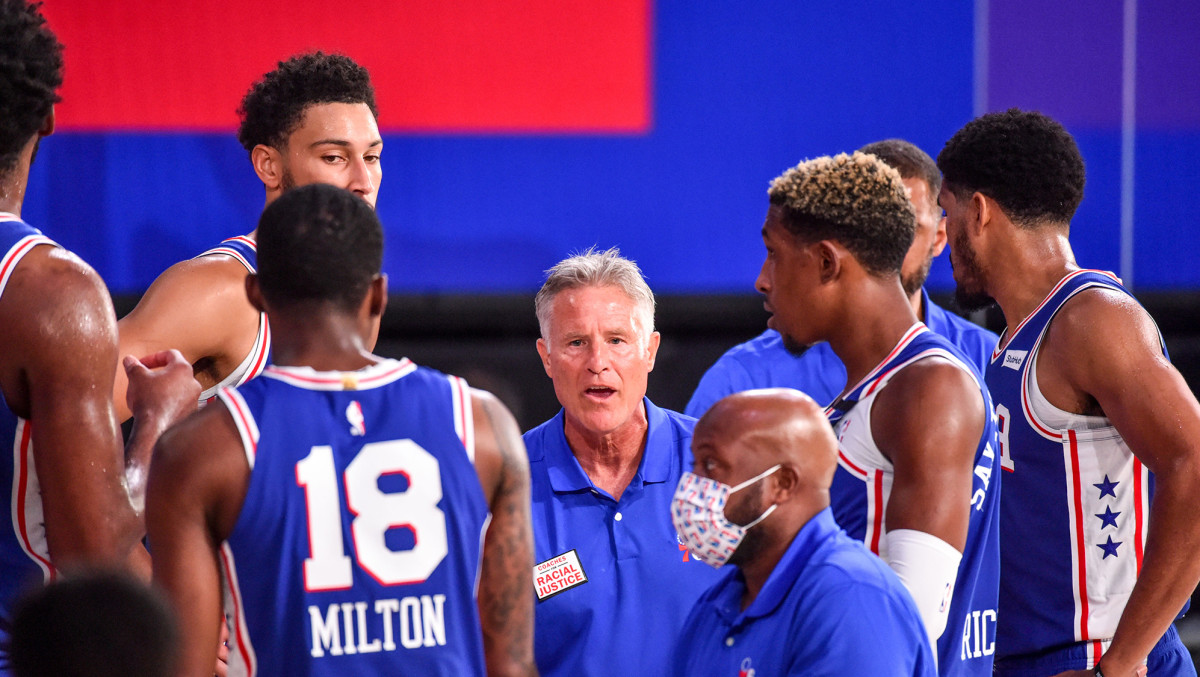
In that moment, Brown sounded exactly like every Sixers skeptic from the past 10 months. The doubts had proven true, decisively, and there was no longer any point in denying them. If Brown seemed at peace with what was to come, Embiid sounded confused, disappointed, and defensive. He deflected a question about Brown’s future, saying that he was “not the GM,” and offered a noncommittal response when asked about his future with the Sixers. “I always say I want to end my career here. If it happens, good. If it doesn’t happen, well, you move on and all that stuff.”
Embiid’s most interesting statement, by far, came in response to critics who argued that he made life easier for his opponents by settling too often for jumpers rather than dominating around the basket. TNT’s Shaquille O’Neal and Charles Barkley were two of the most prominent NBA voices banging this drum. The talk clearly bothered Embiid, who didn’t have the luxury of playing in the 1980s and ’90s, when big men weren’t expected to be as active, versatile and quick as they are in the modern game.
“A lot of people always want me to be a big man, to be Shaq,” Embiid said. “But this league, and this game, is completely different. They call a bunch of offensive fouls all the time. You can’t use your elbow. You can’t push people all over the place. You can’t post up as much anymore. You’ve got to move the ball. I’ve just got to work on my game and fit whatever the team wants me to be. I can be dominant down low, but it’s not always about me. It’s about the team.”
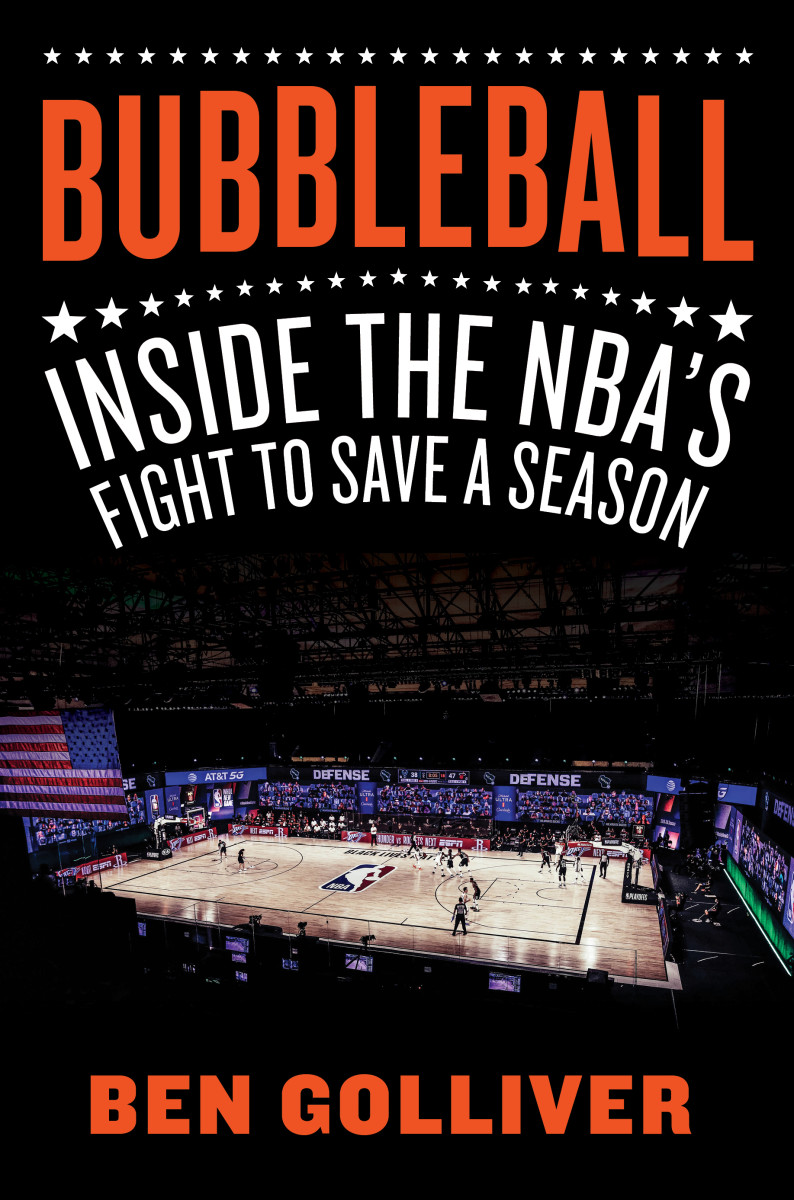
There was plenty of truth in what Embiid said, even if some perceived it as whining. The game was vastly different from previous eras, a fact made clear by the relative impact of Tatum and Embiid. The 22-year-old Tatum was still years away from his prime, but his three-point shooting and deep range created far more problems for Philadelphia’s defense than Embiid’s size did for Boston’s defense.
Critics who wanted Embiid to tighten up his shot selection and reduce his reliance on low-efficiency midrange shots had a point, as did detractors who argued that the Sixers had gone as far as they would ever go under Brown. The biggest issue, though, was that Philadelphia general manager Elton Brand had constructed a roster in 2020 that would have been far more successful in 1990, 2000, or even 2010. Big changes were needed immediately.
Because of the bubble’s condensed schedule, which saw teams play every other day early in the playoffs, the Sixers’ postseason run was over in the blink of an eye. By Aug. 24, exactly one week after the playoffs opened, Brown was fired. “Unfortunately, we fell well short of our goals this year and I believe it is best to go in a new direction,” Brand said in a brief statement, acknowledging that the Sixers were entering an “important offseason” and that they needed to “get back on track” toward title contention.
The bubble had stripped the Sixers bare, forcing them to contemplate existential questions they had spent months trying to avoid.
More NBA Playoff Coverage:
• It’s Time for Bradley Beal to Get His Due
• The Superfans Are Ready
• Atlanta Is Falling Hard for the Hawks
